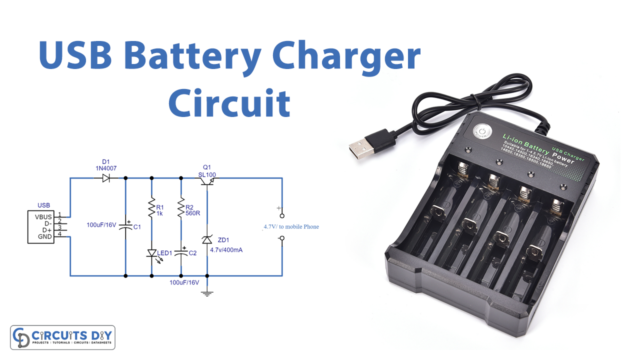Introduction:
The charger is a device that is used to charge the equipment powered by a battery. It deposits the energy into the battery by forcing an electric current through it. It is also known as a battery charger or recharger. There are various types of chargers for different applications.
The post describes the circuit diagram and working explanation of the simply designed circuit of the lead-acid battery charger. A lead-acid battery charger converts the chemical energy into electrical energy, chemical energy is stored in it and is consumed for conversion when it is required. When the electrical energy is converted back into chemical energy, the phenomenon is called discharging of the battery.
The two ways of charging used are constant voltage in which voltage is kept constant and constant current in which current is kept constant.

Hardware Components
The following components are required to make a Lead-Acid Battery Charger Circuit
| S.no | Component | Value | Qty |
|---|---|---|---|
| 1. | IC | LM317 | 1 |
| 2. | Transistor | BC548 | 1 |
| 3. | Potentiometer | 1K | 1 |
| 4. | Resistor | 100 Ohms,120 Ohms,470 Ohms,0.5 Ohms /5W | 1 |
| 5. | Capacitor | 1000uF/40V, 0.22uF | 1, 2 |
| 6. | SLA Battery | 12v | 1 |
LM317 Pinout

For a detailed description of pinout, dimension features, and specifications download the datasheet of LM317
Lead-Acid Battery Charger Circuit

Working Explanation
The lead-acid battery works using a simple circuit that contains IC LM317T, an NPN transistor BC548, a 1K potentiometer, and a few passive components.
The IC LM317 in this circuit is used for the constant current application, a resistor in series at pin3 (adjust pin), is used to obtain a 1.25V drop in voltage at the required current. It provides the true voltage for charging batteries.
The transistor is used to control the charging current, along with resistors and potentiometer. The potentiometer sets the charging current and as the battery starts to charge the current through the emitter resistor increases, and it changes the conductivity of the transistor. The output voltage of LM317 increases as the pin3 (adjust pin) of IC is coupled to the collector of the transistor. When the battery is completely charged, the circuit reduces the current.
Applications:
The applications of lead-acid batteries are mentioned below:
- It is used in recharging applications like automobile starting.
- It is applicable in lighting to provide power.
- It can be used in UPS.
- Furthermore, it is commonly used in photovoltaic systems.
- It also can be useful for standby or backup power for electrical installation purposes.







